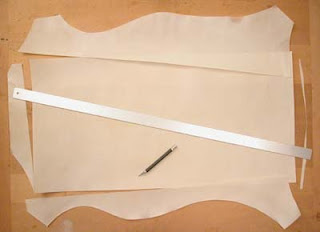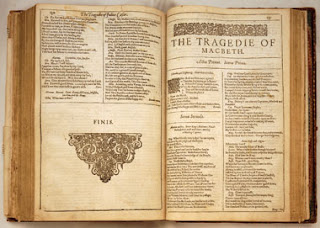It’s Google Penance time once again!* Seems the Google algorithm ferried a confused soul to my post about the silly study that claimed you could tell how big portion sizes were throughout history by looking at famous pictures contained in a single coffee table book, when all said confused soul wanted to know was, “Why are medieval books so big?”**
Ah, my poor wayward Googler, medieval books are no bigger or smaller than modern books, generally speaking. Gutenberg and the other early printers didn’t invent a whole new format for books, they just copied what people were already using.
The question then becomes, I guess, why were medieval books the size they were? And the answer to that is simple: medieval books were the size they were because medieval sheep were the size they were. Remember, paper wasn’t the original medium for page-creation. Medieval books were constructed of parchment, which is a fancy word for sheep or goat skin (and primarily sheep skin, because there were a lot more of them around). So take your average sheep:
 |
| Dolly the Sheep*** |
Skin her and trim off the curvy parts where her legs used to be, and you get one gigantic sheet of parchment, way too big for most bookmaking purposes.
But that’s fine, because you can fold it in half and you’ll get a huge but manageable pair of leaves (four pages counting front and back), which you can gather with a lot of other similarly sized leaves and make a “folio”-sized book, the sort of giant monstrosity of a book that you have to leave spread out on a table before you in order to read and which, not surprisingly, they don’t tend to make too many of these days. It’s good size for a fancy atlas, but since we’ve all got Google Earth, who needs that? Or if you need to make an edition of the complete works of somebody famous, like so:
Fold that single-folded sheet once more and you’ll have an eight-page-per-sheep book they call a quarto (for 4 leaves), which is the fancy dictionary or encyclopedia-sized book.
Fold it again and you get an octavo, which is about the size of a modern hardback, give or take.
Fold it one more time and you get a sixteenmo, or around the size of a mass-market paperback book.
One more fold gets you thirty-twomo, which is about the size of your standard notepad (or just a bit bigger than your smartphone), and at this point you’re talking books designed to hide away in your girdle or hang from a chain around your neck. So if you’re going that small, why not fold it one last time and you get down to a sixty-fourmo, and impress all the cool kids at the cathedral next week?
So there you go: books are as big as they are because medieval sheep were as big as they were. Next time you’re squinting at your mass-market copy of Dan Brown’s latest wishing the pages were just a smidge roomier, blame the medievals for not having bigger sheep.
—
*It occurs to me that newer readers–and since the Newt thing, there’s a lot more of you than usual–probably have no idea what Google Penance is. You see, back in the early days of the blog, most of my pageviews came from people misdirected here by Google while searching for more useful sites. In penance for this ill-gotten gain in hits, I occasionally try to answer whatever question it was that brought the unfortunate Googler hither.
**Actual search terms: “why are as big as medieval book??”
***Who, according to my commenters, isn’t the right sort of sheep at all. But when I contacted the sheep modeling agency, they convinced me to go with her. “Your readers deserve the best, most famous sheep we have on retainer,” they told me, and fool that I am, I believed them.




